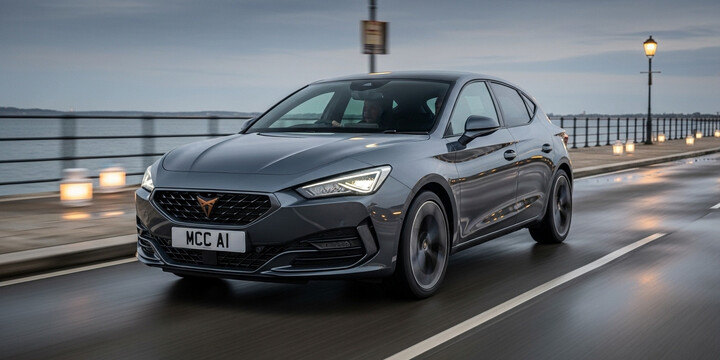
CUPRA LEON HATCHBACK (2024-)
The CUPRA LEON HATCHBACK (2024-) is a stylish and sporty choice in the hatchback segment, popular among drivers who value performance, design, and practicality. As a versatile model, it’s well-suited for urban commuters, small families, or anyone seeking a dynamic driving experience with an eye-catching appearance. The CUPRA LEON stands out for its sleek design and modern features, offering a blend of comfort and agility that makes it a compelling rival to other sporty hatchbacks on the UK market.
Based on MyCarCheck.com data, the CUPRA LEON HATCHBACK (2024-) has a strong presence in the used car market, with an average private sale valuation of around £27,532 and typical mileage of approximately 29,481 miles. Its approachable cost combined with low ownership turnover suggests good reliability and ongoing appeal. Known for its engaging driving experience and distinctive design, the CUPRA LEON is often chosen by those who want a stylish yet practical vehicle that performs well both in city streets and on longer journeys. Whether considering used models or new, the CUPRA LEON HATCHBACK continues to be a noteworthy contender in its class.

average use

The data indicates that the vast majority of the most recent mileage readings for 2024 CUPRA Leon Hatchbacks are concentrated in the 0 to 10,000 miles range, accounting for approximately 99.1%. Only a small fraction, around 0.9%, have recorded mileages between 20,000 and 30,000 miles. This suggests that most of these vehicles are relatively new or low-mileage.

vehicle values

The data presents private sale price variations for the 2024 CUPRA LEON HATCHBACK in the UK, with percentage figures indicating the distribution of sale prices within specific ranges. Notably, the most common sale price range appears to be between £26,000 and £27,000, representing about 24.3% of the data. Additionally, there are significant clusters at both the lower (£22,000–£23,000, 6.1%) and somewhat higher (£30,000–£31,000, 7.8%) ranges. Interestingly, the highest listed range (£33,000–£34,000) shows a relatively low percentage (5.2%), and the narrowest price range (£32,000–£33,000) has the lowest proportion at 1.7%. Overall, the data suggests a central tendency around £26,000–£27,000, with fewer sales at the extreme ends of the price spectrum, indicating the market's price distribution for this vehicle is somewhat concentrated in the mid-range.

production years

Based on the available data, most of the CUPRA LEON HATCHBACK models manufactured after 2024 are actually from 2025, accounting for 70.4% of the sample. Only a smaller proportion, 29.6%, are from 2024. This suggests that the majority of these vehicles on the market or in circulation are relatively recent, primarily from 2025, which could reflect ongoing production or availability trends.

colour popularity

The data indicates that the most common main paint colour for the 2024 CUPRA LEON HATCHBACK is Grey, accounting for approximately 47.8% of vehicles, followed by Black at 28.7%. White and Blue are less prevalent, representing 13% and 10.4% respectively. This suggests a strong preference among buyers for neutral, understated colours, particularly grey, which dominates nearly half of the vehicles in this model.

ownership cycle

The data indicates that the majority of CUPRA LEON HATCHBACK (2024-) vehicles have only one registered keeper, accounting for approximately 85.2%. A small proportion, about 7%, have two registered keepers. Interestingly, 7.8% of the vehicles have an unspecified number of registered keepers, which could suggest missing or unrecorded data. Overall, the high percentage of single-keeper vehicles suggests that most owners tend to retain the vehicle for a significant period without changing hands frequently.

engine choices

The data for the 2024 CUPRA LEON Hatchback reveals that the majority of vehicles are equipped with a 1.5-liter engine capacity, accounting for 87%, while a smaller portion (13%) feature a 2.0-liter engine. In terms of fuel type, hybrid electric models dominate with 58.3%, surpassing petrol versions, which make up 41.7%. This suggests a strong preference for hybrid technology in this model, reflecting a shift towards more sustainable driving options within the range.












